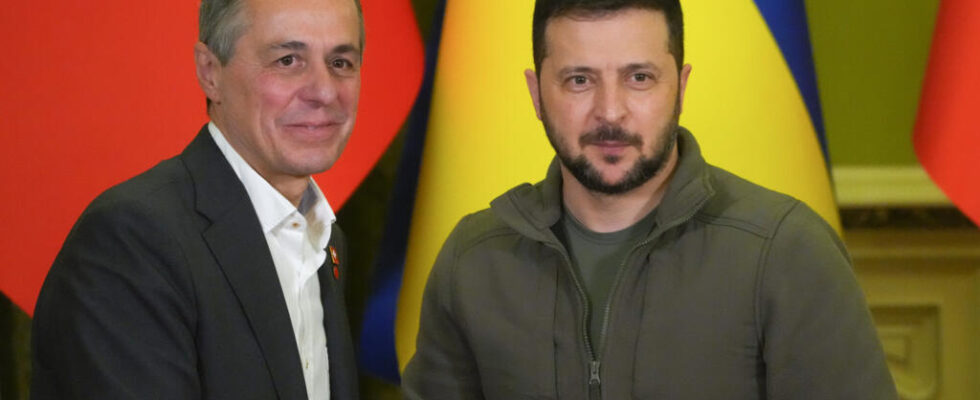In the name of the principle of neutrality, Bern refuses that its guns sold to friendly countries be redirected to Ukraine. The subject divides the country and puts the Swiss arms industry to the test. The Upper House of the Swiss Confederation must debate it from this Monday, March 6.
Bern has opened its borders to Ukrainian refugees, approved the sanctions against Russia, but the Swiss government still refuses to authorize the re-export of weapons produced on its territory to Ukraine. Even if they were sold sometimes more than 20 years ago. This position increasingly irritates Europeans. The all-powerful Germany is threatening to change suppliers.
Germany, which is the leading importer of Swiss arms, was treated like Denmark or Spain. The country has seen its request to re-export to Ukraine the Swiss guns that equip its Leopard 2 tanks intended for kyiv. Contractually, purchasers of Swiss arms undertake, upon signature, not to deliver them to third countries.
The Swiss law on war material is one of the strictest in the world
It is, however, a fairly common device in the arms trade. Germany, for example, which is offended today by the rigidity of its Swiss neighbours, has long had its ears dragged out of authorizing Poland to supply tanks to Ukraine. And the Swiss system is, it must be said, more or less well applied.
► Read also: Munich Conference: arms deliveries to Ukraine, from incantation to action?
Saudi Arabia used Swiss assault rifles in its war in Yemen, according to a Swiss media investigation, which is against the law on war material. The Swiss authorities took refuge behind the law, explaining that the contract signed predated the conflict and the latest amendments to the famous law on war material.
Can we combine neutrality with the development of a defense industry?
Switzerland chose to have an army to defend its territory. And to equip it, it relies on its own forces, its local production and its inventions such as the famous Sig Sauer pistol. It is a featherweight in terms of GDP: 1% of the Confederation’s GDP, 0.2% of exports. But it is an indispensable instrument of sovereignty for the defense of the country, with essential spin-offs for the rest of the industry.
Many concepts developed by arms companies are taken up in the civilian sector. Switzerland has thus exported its anti-aircraft defense system to Qatar to protect stadiums during the World Cup. Without exports, this industry is not viable because internal demand is far too low to ensure its profitability. It exports about half of its production, especially to Europe.
Can the debate in Parliament change the situation?
The Upper House wants to make the system more flexible, the Lower House wants a law specially dedicated to Ukraine, and the executive does not want to change anything. It is difficult to see how an agreement could emerge from this cacophony. Perhaps once the Russian war in Ukraine is over, commentators on the shores of Lake Geneva scoff. This war has not finished shaking up the Swiss model.
The seizure of Russian funds deposited abroad, and therefore partly in Switzerland, to finance the reconstruction of Ukraine is another subject of tension between Bern and Brussels. Complying with this seizure suggested by Poland would call into question banking secrecy, the cornerstone of the lucrative financial sector. And this time, it is one of the engines of the economy. The sector weighs not 1% but 10% of GDP and provides 5% of jobs.
► Also to listen: The war in Ukraine was at the heart of the Davos Economic Forum
